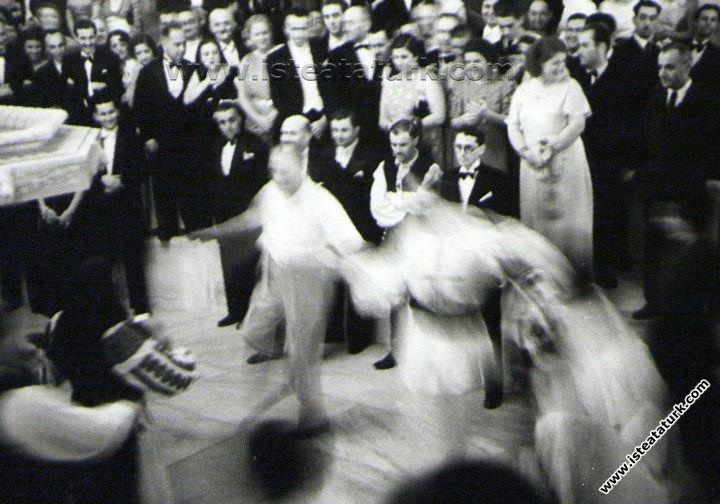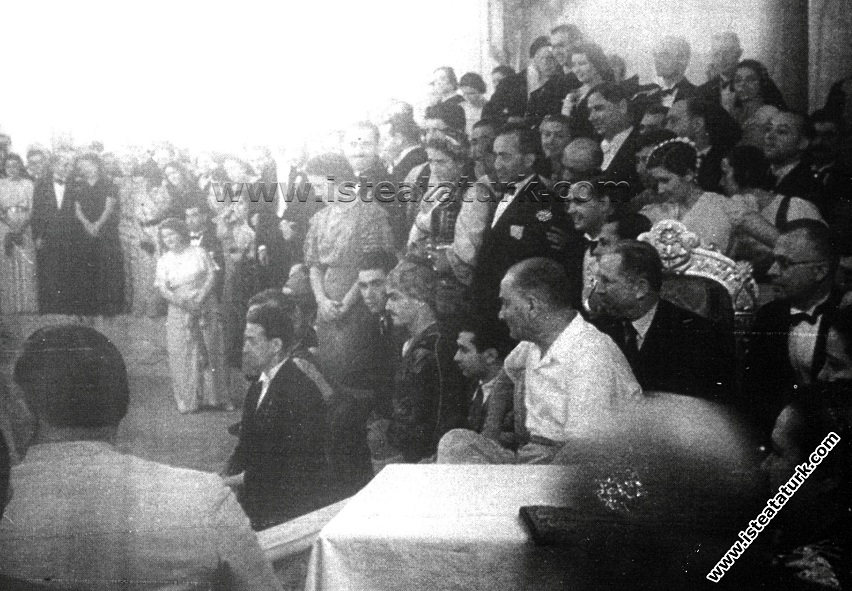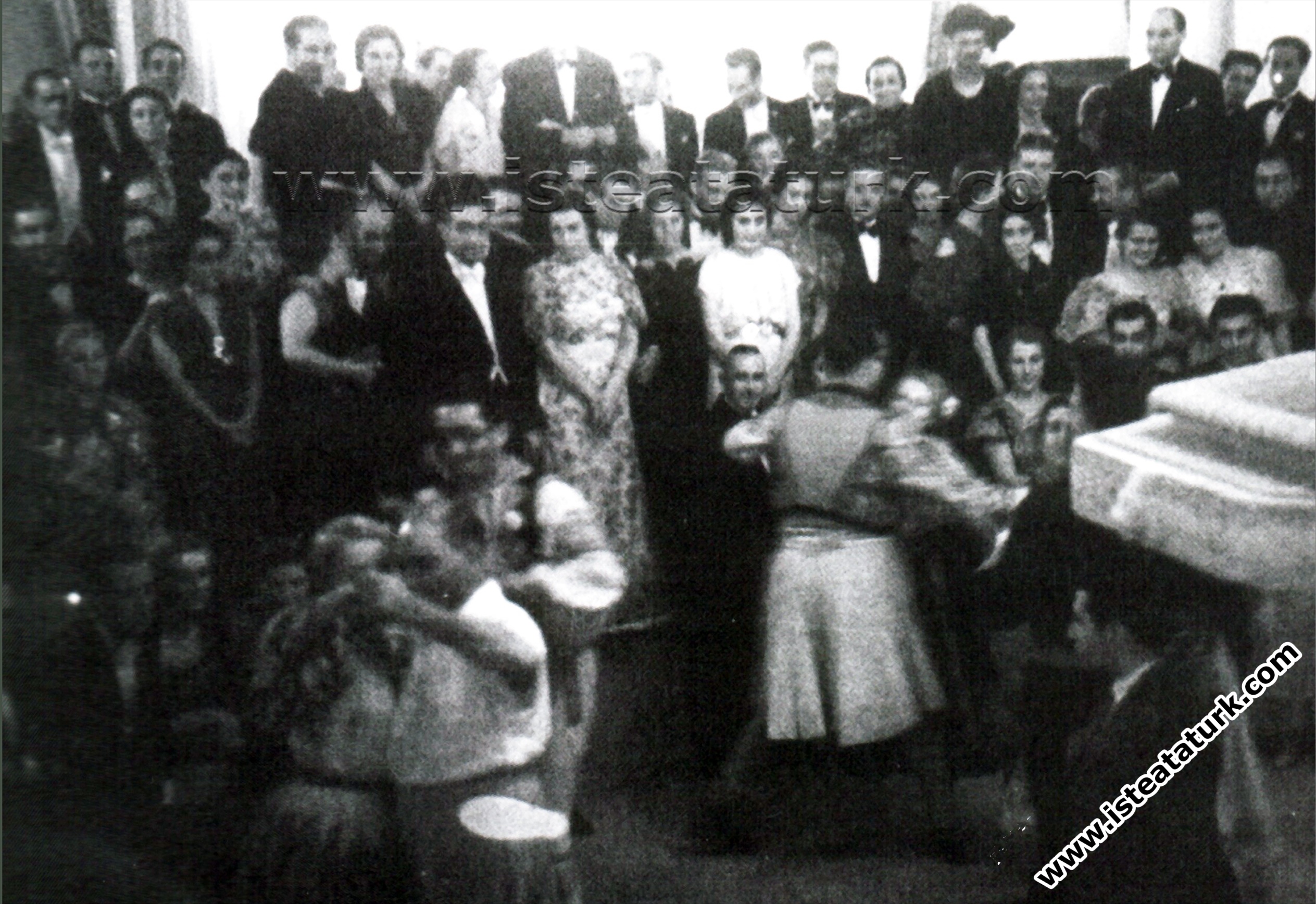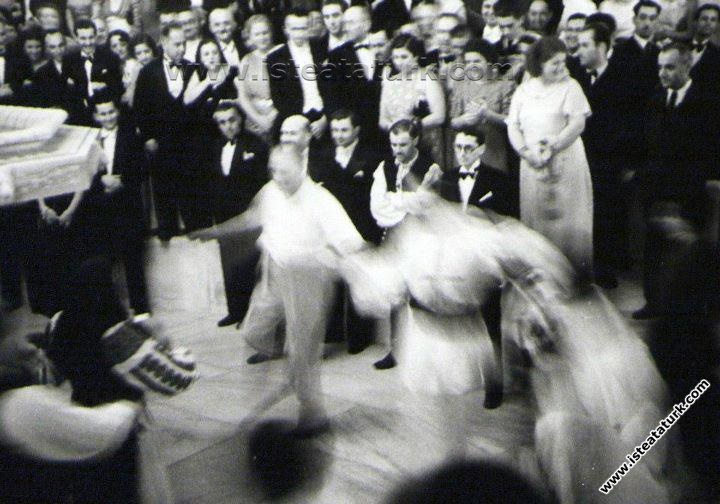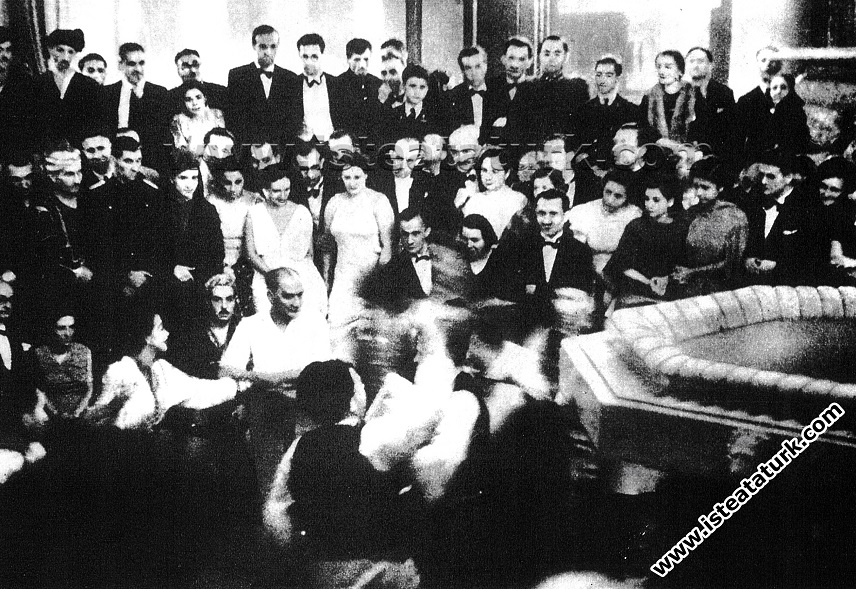
Great Leader Atatürk and Polyphonic Turkish Classical Music
Character Size
“The measure of a nation's new change is its ability to perceive and comprehend the change in music.” Gazi Mustafa Kemal
THE GREAT LEADER ATATURK AND PURPOSE OF TURKISH ART MUSIC
Investigations made to investigate the reason for Atatürk's extraordinary interest especially in the art of music yield interesting results and it is impossible to compare Ata with any of the statesmen who have come and gone in history. Because throughout history, almost all of those who have assumed the responsibility of the presidency have contributed to enriching a musical culture that has not entered a period of stagnation in its development effort. Atatürk, on the other hand, was worried about closing the gap created by the tides caused by the harsh wars that went on for centuries, and the pauses in the effort to modernize the music culture as soon as possible. For this reason, he said, "The measure of a nation's new change is its ability to perceive and comprehend the change in music."
For this reason, with his warnings on the path of modernization, he reminded that it would not be possible to get rid of the influence of the law of development, that development and change were inevitable for all arts, and then sought a measure for the process of change for countries that had a deficit in contemporary culture, and that such a measure was nothing but the principle of change in music, first of all. made it clear that it could not. I wonder what could be the most obvious response to such a change that Ata, who has never been involved in music, meant for contemporary Turkish art and music? The most obvious response here, that is, the only thing that needs to be realized, is just polyphony; and nothing other than a polyphony that will arise from the body of our national music is capable of realizing the necessity of contemporary change and development.
There are other beliefs adopted by Ata, who was deeply attached to the art of music, about national music, which also carry the importance of being interpretations that show that the only way to change and renewal is polyphony, because Ata put forward in his opening speeches to the Grand National Assembly on this subject. When the principles are brought together, a unique perspective is encountered, which sheds light on the principle of "to be able to receive and comprehend change in music", as they say, and Ata says: This is done. However, it is Turkish music that needs to be brought to the fore the quickest in this. When the Turkish mind today thinks about music… they are not looking for music that will give people a simple and temporary excitement. When music is said, our high emotions, we want a music that finds the expression of our lives and memories. Today's Turks expect the service that other high and sensitive societies expect from music... It is necessary to collect high sayings expressing national, delicate feelings and thoughts, and to process them the day before, according to the general final music rules. Only at this level can Turkish national music rise and take its place in universal music”.
It is possible to give an international as well as a national character to the art that will be formed by collecting high sayings and sayings and processing them the day before, according to the general latest music rules, the basic principle on which Ata's extraordinary purpose is based, again with his own definitions. , this can only be achieved with the polyphony technique; The basic principle that Ata and Ata explained by putting forward the view of "processing our national music according to the general final musical rules" clearly reveals that the only method used "generally" in the formation and development of all national music is the polyphony technique.
In the light of Atatürk's cultural reforms, our composers who had studied in the West, and our young generation composers who performed at the Ankara State Conservatory, pioneered the formation and development of polyphonic Turkish art-music, and with the works they produced in accordance with contemporary techniques and aesthetics, they only joined the polyphonic Turkish art-music repertoire. not only have they contributed to the international art-music repertoire.
There is a great necessity for our national communication institutions (press-broadcasting, radio, television) to help Turkish art-music, which is fed by the international common technique of contemporary science, to be effective at home and abroad. However, it is certain that fruitful results will be achieved in a shorter time only if our communication institutions, which I wholeheartedly believe in their commitment to Atatürk's principles of art, support the success of our institutions that carry out the formation and development of polyphonic contemporary Turkish art-music.
Contemporary Turkish art and music, transcending local borders, "to take its place in universal music" as Ata emphasized, that is, to be applied and understood in our country as well as in all civilized countries, to create a technique parallel to the international polyphony technique in our country, and to only use it in such efforts. possible by using international standard instruments; on the contrary, it means not being able to participate in the struggle for supremacy in the culture that goes on relentlessly in the art world and not being able to take the place we deserve in the international art world with equal rights and level.
The intensified efforts of the Ankara State Conservatory and the State Symphony Orchestras, which are the fruits of this institution in a period of nearly 50 years, and the State Opera and Ballets, are fed by the principle of reaching the modernity level of our Ata as soon as possible. However, the vitality brought by the polyphonic technique to the contemporary Turkish art-music that will be obtained in this way and a colorful expression power make it possible to create a type of interpretation that cannot be obtained with any other technique than this technique. Such a renewal, which Ata means, gives a versatile expression power to works of great form and scale, especially symphony, concerto, oratorio and opera. The philosophical humor, which is reflected in the shadow-light contrasts that dominate the creation, is also effective in reaching a very rich expression potential of the polyphonic texture. In other words, such a superiority is the main factor in the formation of a dynamism that adds an unlimited dimension to the symbolic expression power of the work. As a matter of fact, the ups and downs of the mind and soul, which are the basis of such practices, and the principle of making sense in the language of music -as in all parts of the world- have enabled us to obtain fruitful results.
According to Atatürk - as in the civilized countries of the world - the effort to reach the richness of expression, which is important for every branch of national culture, is for the renewal of fine arts in accordance with the characteristics of the age. When this is the case, for example, a national music is also effective in the emergence of an international creativity.
There is no doubt that Ata's formula of change and renewal in music documents the principle of "renewal in tradition", which our famous thinker Ziya Gökalp (1875-1924) established on a classical-positivist basis, from an ideal-positivist and even pragmatist point of view. Because Ziya Gökalp also expressed an interpretation parallel to Ata's principle that “change in music will be the measure for the completely new change of a nation” in a renewal philosophy unique to his personality and said: “... they remain and cannot create a future. Tradition means creation and development. Because tradition, like a force that moves a past that has fused various moments with each other, has a current that pushes it forward from behind, constantly giving rise to new developments and trends.
The essence of the concept of “foreign innovations” in Ziya Gökalp's interpretation explained above means the contribution of innovations to be brought by education, which Ata attaches importance to above all, and then useful factors of various kinds that can be reflected from the outside in in international cultural and artistic encounters; and the first of two extraordinary renewals that took place in our art world in this way: the new Turkish painting with perspective (three-dimensional), which began to replace the one-dimensional miniature at the beginning of the 19th century, and the second: the monophonic (monodic-modal) [monodic-modal] Turkish music, the country It is a polyphonic national Turkish art-music composed under the direct or indirect influence of folklore or with free inspiration.
The researches and analyzes we have done so far show that the most important innovations that Atatürk's reforms have successfully accomplished in the field of polyphonic art-music are: Symphony, concerto, oratorio, opera, a symphony, which is the subject of major forms of international music literature with the contribution of a polyphonic technique suitable for our own music. Polyphonic contemporary Turkish art-music that includes capella or accompanying choirs and instrumental and vocal works from different genres, namely ballet music.
The effort of the young Turkish Republic to modernize all branches of art, which is powered by Atatürk's principle of exaltation in national culture, has brought new works to our national music literature in a very short period of 50 years, and even contributed to the international music repertoire with some important works. Meanwhile, contemporary Turkish composers have successfully promoted polyphonic Turkish art-music at home and abroad by writing works on a large scale for the “orchestra, solo and choir” ensemble. And such an art movement created by Atatürk's revolutions has enabled large-scale works created by the joint contributions of contemporary Turkish literature as well as Turkish Sufi literature to open an eye to a new and fresh life. As an example to this very important subject: Ahmet Adnan Saygun's "Yunus Emre Oratorio" and Nevit Kodallı's, Of course, the “Atatürk Oratorio” created by Cahit Külebi from the verse text describing the War of Independence will have to be shown. The Turkish premiere of the oratorio, which Saygun wrote inspired by the divan of a great man like Yunus Emre (1240-1321), who impressed the world, had its French premiere on May 25, 1946, in Ankara, at the Faculty of Languages, History-Geography Hall, under Saygun's direction. on the other hand, with the translation of the French musicologist of the Yunus divan Eugène Borrel (1876-1961), it was performed in Paris in 1947, again under the direction of Saygun, first on the French Radio, by the radio's orchestra, choir and soloists, and then again in Paris in the same year. It was performed by the Lamoureux Orchestra and the St. Eustache choir and soloists at the Pleyel Hall under Saygun's direction.
The United States premiere of the “Yunus Emre Oratorio” with the English text was on November 25, 1958, under the direction of the famous conductor of the time, Leopold Stokowsky (1882-1974), with the Symphony of the Air orchestra and the New York State University Higher Teacher Training School. It was performed by the choir (Crane Chorus) and its soloists in the great hall of the United Nations building in New York, and the piece was repeated at Crane College on December 14 of the same year under Saygun's direction. The repercussions of the work's performance in both Paris and New York are great and gratifying in the foreign press. It is seen that Ata is a fully-fledged example of the principle of refreshing and renewing our national culture with the language of contemporary art, Ahmet Adnan Saygun with his "Yunus Emre Oratorio", Nevit Kodallı with his "Atatürk Oratorio", They have given gifts to our national music literature as well as to the international music literature. In the meantime, Saygun has achieved the happiness of presenting the priority given to love by Yunus Emre in his effort to elevate the mind and the soul, in the unique philosophy of contemporary Turkish art and music, and presenting it not only to us but to the whole world.
They participated in the world's famous ballet ensembles as prima ballerinas and ballet dancers, and introduced polyphonic contemporary Turkish music in concerts and recitals. As a matter of fact, even mentioning only one of the achievements of our opera singers clearly reflects an extraordinary artistic event: The world premiere of our famous dramatic soprano Leyla Gencer, who only studied music in Turkey, and the French composer Francis Poulenc (1899-1936) took place in 1957. His leading role in the opera “Les Dialogues des Carmelites”, performed at the La Scala theater in Milan, is that he played with a superior performance as a guest artist and was honored by the constant applause of thousands of spectators (I was among them).
Continuing its development by utilizing the common technique of contemporary science, Ankara State Conservatory has easily reached the level where it can stage the most powerful and superior works of world opera literature with Turkish texts in a very short time like 12 years; and by the way, even the works of the greatest opera composer of the 20th century, Richard Strauss (1864-1949) “Salome” and Carl Orff (1895-1982) “Smart Girl” (Die Kluge), were successfully performed on the stage of Ankara State Opera. (1958). This event was also met with interest in the Western press. Even Richard Strauss' son, Dr. On this occasion, Franz Strauss expressed the following opinion in the telegram he sent to the general director of the Ankara State Opera: “Turkey has opened a new era in its cultural development in the Western sense by playing this work, which is extremely difficult to stage…”.
Continuing their efforts to produce works in the light of Atatürk's principles with inexhaustible faith, Turkish composers have not neglected to be inspired by international sources as well as our national traditions, and they have also been successful in adding operas to their works in various genres, especially in the last half century; and the most important of these operas and their composers, in chronological order, are: Sultan Cem, Zeybek, Çelebi (Cemal Reşit Rey); Öz Soy, Taş Bebek, Kerem, Köroğlu, Gilgamesh epic drama (Ahmet Adnan Saygun); Bayonder (Necil Kazim Akses); Van Gogh, Gilgamesh (Nevit Kodallı), Nasreddin Hodja (Sabahattin Kalender); Midas' Ears (Ferit Tuzun); Gülbahar (Cetin Işıközlü), Deli Dumrul (Cengiz Tanç); IV. Murat (Okan Demiris).
The analyzes made so far clearly reveal what we lost in contemporary Turkish art, especially in music, until the Great Leader Atatürk seized it. However, the fact that past administrations have not been able to fully address this issue with Atatürk's reform principles has not been able to give our contemporary art works the necessary speed to approach the desired goal, but the law of development of nature continues and will continue to dominate.
Cevad Memduh ALTAR (National Culture magazine, Ministry of Culture and Tourism, Issue: 34, 1982)
Source : www.cevadmemduhaltar.com
We would like to thank Ms. İnci Kut, daughter of Cevad Memduh ALTAR, for her support.
